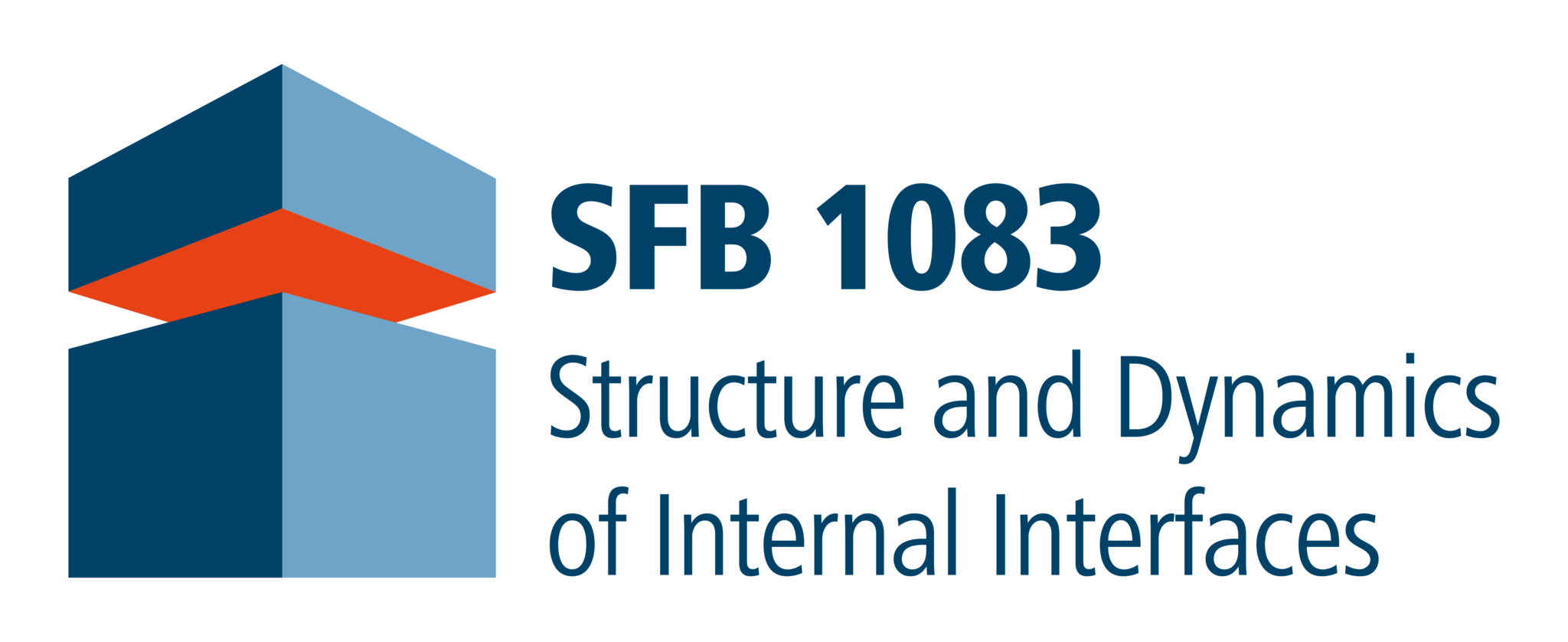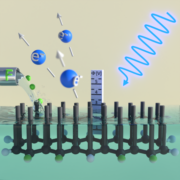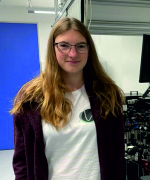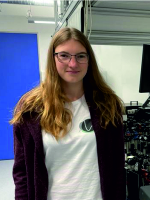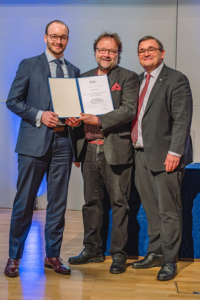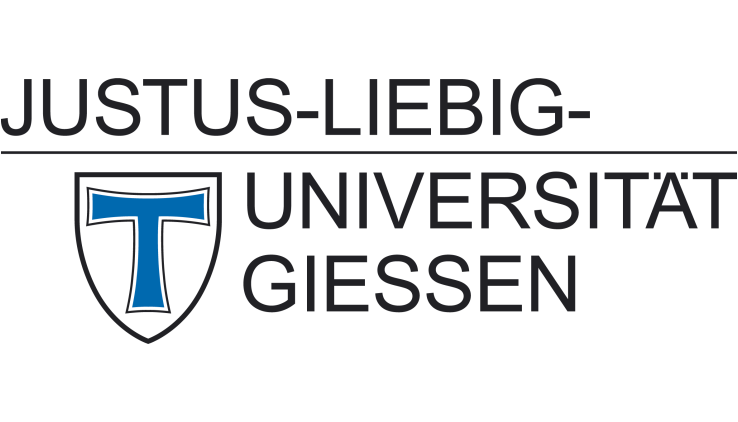Chemical Doping by Fluorination and Its Impact on All Energy Levels of π-Conjugated Systems – Publication by A2 (Witte) and A8 (Koert/Dürr)
In their combined experimental and theoretical study published in the Journal of Physical Chemistry Letters, the groups of Holger Bettinger (Uni Tübingen), Ulrich Koert (A8) and Gregor Witte (A2) investigated the impact of fluorination on the C1s core level energies in fluorinated acene derivates.
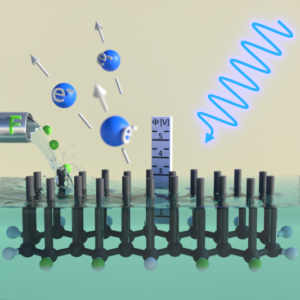
Fluorination affects the inner potential and thus the energy levels, as symbolized by the water level. The electron binding energies are probed via X-ray photoelectron spectroscopy (XPS). (Image: Y. Radiev, Reprinted with permission from ACS J. Phys. Chem. Lett. 2023. Copyright 2023 American Chemical Society.).
Fluorination is commonly used to tailor the frontier energy levels. In the present study, the authors utilized the recent achievements in the synthesis of regio-selectively fluorinated acenes and systematically investigated the core level binding energies by means of X-ray photoelectron spectroscopy (XPS) complemented by density functional theory (DFT) calculations.
These investigations reveal that fluorination leads to core level shifts, which are not limited to directly fluorinated carbon atoms, but also affect more distant carbon atoms. These shifts depend on the degree of fluorination, indicating that local fluorination affects the electron density of the entire aromatic system similar to doping. Since commonly core level shifts are used as fingerprint signatures for the identification of molecular entities, the new results challenge this method for fluorinated π-conjugated molecules. Moreover, as these shifts do not only influence the core levels, but also the molecular valence orbital energies, transitions from the former into the latter are hardly affected by fluorination, as verified by X-ray absorption spectroscopy (NEXAFS) measurements.
Overall, the results show that not only the energies of frontier orbitals but also of all core levels in fully π-conjugated systems are affected by local fluorination, hence limiting a chemical identification based on supposedly characteristic core level energies since they instead depend also on the degree of fluorination.
Publication
D. Bischof, Y. Radiev, M.W. Tripp, P.E. Hofmann, T. Geiger, H.F. Bettinger, U. Koert, G. Witte
Chemical Doping by Fluorination and Its Impact on All Energy Levels of π-Conjugated Systems
J. Phys. Chem. Lett. (2023) DOI:10.1021/acs.jpclett.3c00287
Contact
Prof. Dr. Gregor Witte
Philipps-Universität Marburg
SFB 1083 project A2
Tel.: 06421 28-21384
EMAIL
